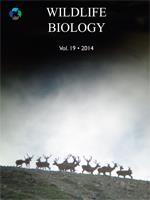Monitoring rare or cryptic species can be challenging, especially with limited time and resources. Dogs are often used for this purpose, but methods are highly variable. There is a need to optimise search methods for dog teams so that time and resources are used as efficiently as possible. Some degree of standardisation is also desirable so that search results are comparable between different times and places. The discipline of search theory has developed effective methods to maximise the probability of detecting a search object and/or maximise the efficiency of a search. However, these advances have not been explicitly applied to the use of dogs to search for plants and animals in the wild. Here, we provide a brief introduction to search theory, then discuss how ideas from search theory might be used to standardise and optimise the use of conservation detection dogs. We describe approaches that have been used, discuss their strengths and weaknesses, and suggest priorities for further research. Standardised methods based on search theory could increase the effectiveness of conservation detection dogs, and make search results more comparable across different locations and times.
How to translate text using browser tools
25 April 2018
Search strategies for conservation detection dogs
Alistair S. Glen,
Clare J. Veltman





